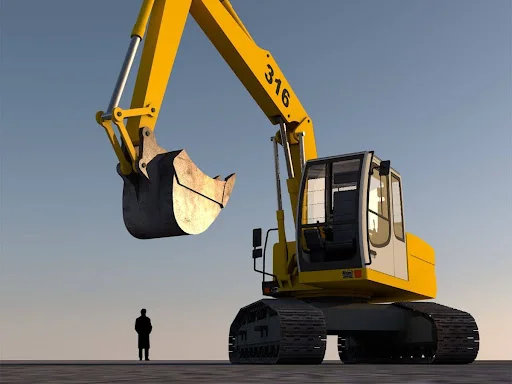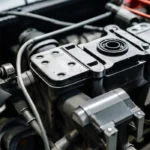Excavators are built for punishing work. They move heavy loads, dig into tough ground, and operate in all kinds of weather. But none of that happens without a strong, reliable undercarriage beneath them. We-Attach Manufacturer, a trusted excavator parts manufacturer, develops components engineered for this kind of demanding use. The undercarriage is often the single most expensive system to maintain. That’s why modern engineering has stepped in to improve durability and extend the working life of these high-wear components. This article explores how smarter design, better materials, and built-in intelligence help excavator owners get more hours, more value, and fewer headaches from their equipment investments.
Smarter Undercarriages
Excavator undercarriages have come a long way. What was once a simple system of steel tracks and rollers is now a highly engineered platform focused on wear control and efficiency.
Today’s undercarriages spread weight more evenly, reduce ground pressure, and minimize joint stress. Structural components are stronger, more flexible, and precision-matched to the machine. This reduces wear at pivot points and improves balance.
Joint design has evolved as well. Sealed and greased connections now resist contamination better than older open pins and bushings. Tensioning systems have moved from manual adjustment to smart hydraulic or automatic adjusters, reducing stress on shoes and links. Furthermore, the integration of advanced hydraulic components like durable Komatsu final drive, ensures optimal power delivery to the tracks, further contributing to the machine’s overall efficiency and long-term performance.
These upgrades help modern undercarriages last longer and work more efficiently.
Key Wear Points
Even with improved design, undercarriages face constant wear. Here are five common failure points and how modern engineering addresses them:
- Track Stretch
Forged track links with heat-treated surfaces resist elongation, maintaining clean, controlled movement. - Sprocket Misalignment
Tighter machining tolerances and integrated guides help keep sprockets properly aligned. - Idler and Roller Fatigue
Reinforced roller bodies, sealed bearings, and improved shock absorption extend service life. - Bushing Wear
Modern bushings feature sealed, factory-lubricated construction and improved metallurgy for abrasion resistance. - Debris Ingress
Updated sealing technology and shielded zones reduce the amount of material reaching moving parts.
We-Attach works closely with contractors who deal with these issues on the ground. By supplying upgraded parts based on these modern principles, the company helps extend machine uptime and reduce replacement frequency.
You might also like: A fresh take that complements what you just read.
Stronger Materials
Material science plays a major role in undercarriage durability. While steel remains central, alloy blends and hardening processes now provide greater resistance to wear, bending, and corrosion.
Hardened rollers and links receive surface treatments that boost hardness while preserving flexibility. Coatings like anti-corrosion finishes and ceramic-style treatments protect parts exposed to moisture, salt, and chemicals.
These material upgrades reduce rust, cracking, and premature wear, leading to fewer replacements and lower long-term costs.
Precision Fit
Loose tolerances create vibration, leading to micro-cracks, joint failure, and misalignment. That’s why modern components—pins, bushings, and rollers—are machined with tighter specs and smoother surfaces.
Alignment is also simpler when replacing parts. Modular designs often include alignment markings or preset adjustment guides to reduce service errors.
We-Attach incorporates high-precision machining into its parts production to support this level of fit. Better alignment helps protect entire machines from unnecessary stress.
Smarter Systems
Undercarriages are getting more intelligent. Some excavators now feature auto-tensioning technology that adjusts track tension automatically.
Telematics systems can monitor undercarriage conditions in real time. From pressure spikes to vibration alerts, modern excavators now provide advance warnings before small issues turn into major repairs.
Some platforms also provide usage data by component group, helping fleet managers spot overworked machines or identify parts approaching failure early.
Easier Maintenance
If maintenance is too difficult or time-consuming, it tends to get skipped. That’s why engineers are focusing on service-friendly designs.
Many undercarriages now feature modular assemblies, allowing worn sections to be replaced without rebuilding the entire structure. Inspection points are easier to access, and some systems include wear indicators or built-in drain plugs for simpler fluid checks.
These features help save on labor hours, prevent missed issues, and support longer equipment life.
Longer Uptime
Undercarriage wear isn’t going away, but modern engineering makes it easier to manage. Better materials, smarter designs, tighter tolerances, and real-time monitoring help keep machines running longer.
From sealed bushings to precision-fit pins and smarter tracking systems, excavator undercarriages are now built to perform longer and fail less often.
We-Attach supplies upgraded parts specifically designed with these engineering improvements in mind. Contractors using such components experience fewer replacements, smoother machine operation, and reduced downtime across their fleets.
For those looking to extend fleet longevity, investing in a well-engineered undercarriage is one of the smartest moves. Small improvements today can lead to years of added machine life and lower total ownership costs.
Want more insights like this? Head over to Management Works Media and start exploring.






